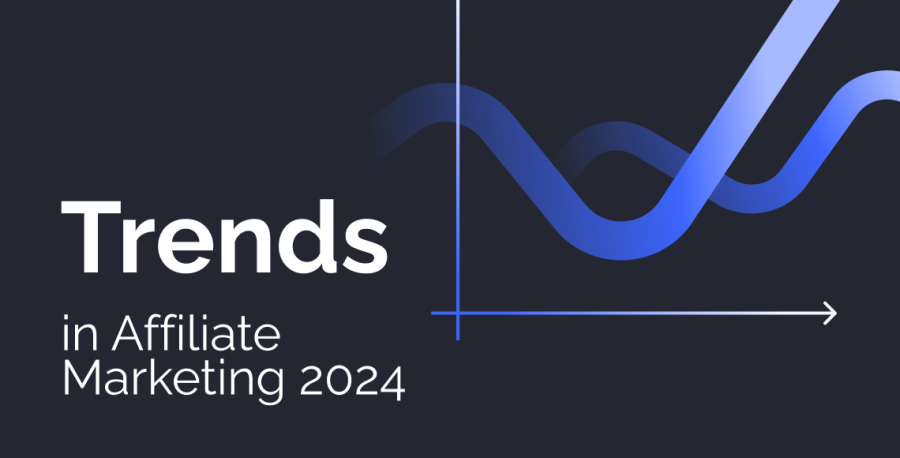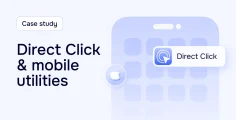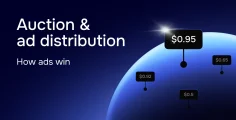Fighting for user’s attention is what defines marketing nowadays. To smoke the competition, you must think one step ahead. That’s why we’ve compiled some upcoming trends for 2024 in one place for you to study and be prepared for the upcoming changes.
Quality and Frequency of Creatives Matter
Via: Unsplash
Consumers don’t get tired of ads, but marketers do. When the competitors grow their investments in marketing, it is crucial to balance it, even with repetitive ads. A quick way to make your creatives more engaging is to look at the examples from 20 to 30 years ago and reinvent them. But are there any other ways to improve the quality of media?
Academics believe a user’s interest takes 3 ad exposures to peak; every subsequent ad impression loses effectiveness due to repetitiveness and boredom.
There are three things to consider, however: quality of creatives, contextual targeting, and data-driven approach. Advertisers switch to guerilla marketing more often, i.e., when the ads are placed unconventionally.
This is where native advertising starts to gain traction since it blends in with the website content. Contextual marketing also makes it easier to earn the favor of the audience thanks to seamless ad integration, which is a boon for UX.
Via: Analytic Partners
The quality of creatives matters the most. Guerilla marketing is a presentation, but the creatives must be up to the standard too. Marketers work their fingers to the bone to surprise the capricious users. Some of the most daring marketing examples include:
- PooPourri: Girls Don’t Poop, or do they? — a funny way to talk about not-so-funny business
- Burger King: Burn that Ad — augmented reality as a way to use the ads of competitors to your advantage
- IKEA: Life’s Not a Catalogue — a 30-sec ad featuring (sic!) a vomiting mother
Modern ads tend to either explore high-tech solutions or challenge social norms. Provocative ads resonate well with the audience, nudge them into expressing their opinion, and compel them into conversation. For the ads to hit the bullseye, they gotta be user-centric and capitalize on house chores, something from an ordinary life.
Video Ads Grow but Push Notifications Are as Effective
Video ads continue to grow in popularity. 53% of viewers are ready to watch a video to the end. And while many advertisers use short-form videos for increased user engagement on YouTube and TikTok, more and more marketers switch to long-form videos. About 16% of viewers watch a 60-minute-long video in full. The number might seem unimpressive, but those are the prospects engaged enough to spend an hour learning about the product — they are genuinely interested.
The major roadblocks on the way to mass video production are lack of time (33% of marketers) and lack of funds (20% of marketers). In this regard, Push notifications and OnClicks remain affordable ad formats. Moreover, nothing prevents you from trying out integrating your video content into your PopUnders, so experiment. Innovation is the foundation of success nowadays.
Push notifications enjoy an opt-in rate of 60%. And, unlike video ads, they are also easier to produce. An interesting fact, 3–10 pushes a week cause the biggest opt-out rate of up to 42%. While 2 pushes per day seem reasonable, 11 are not, what’s the catch? If the message implies sending a bulk of push notifications, the users seem to be OK.
Articulate the Usage of Artificial Intelligence
Speaking of innovations, AI won’t take your job, it’s somebody using AI who will. As of February 4, 2024, ChatGPT hasn’t replaced marketers, programmers, and copywriters. However, the SEO apocalypse is foreshadowed indeed — a pretty questionable statement, if you read the comments there.
Brands actively use AI to provide customer support. Companies look for better conversational experience, marketers consult Midjourney for assistance with creatives, and copywriters ask AI text generators for ideas and text structures. These generators are not limited to ChatGPT:
AI is akin to blockchain a couple of years ago. It sounds high-tech and catches attention right away. AI has transformed the way marketers handle big data. It also helps to achieve greater customer satisfaction, thanks to more precise targeting and better pitches. As a marketer, try to bring the idea of AI usage into the limelight, if the offer at hand allows it.
Retaining the Users Is Paramount
Via: Search Engine Land
Consumers enjoy a vast range of product alternatives. Organic social media engagement is in decline, with the notable exception of LinkedIn. Fighting for user’s attention, brands inevitably create an oversupply — hence, the vast range of alternatives. Retaining customers has always been cheaper than acquiring new ones, but in 2024 it becomes paramount.
Social media heed the calling. We’ve already mentioned earlier that more and more marketers switch to long-form videos. To cater to their needs better, TikTok tests 15-minute-long uploads.
Cutting-edge technologies make retention even more of a must. The aforementioned example of Burger King using augmented reality to convert competing ads to their own is just the tip of the iceberg. There might be some changes in legislation to outlaw this kind of questionable business ethics. But for now, marketers should be especially focused on retaining the users.
Making the right impression is at the foundation of retention. That’s why many marketers opt for complex video ads, Computer-Generated Imagery (CGI), and 3D content. It’s all about surprising the user, evoking emotions, and capitalizing on impulse buying.
Data Privacy Is Appreciated more than Engagement
VPNs and Antiviruses are popular for a reason. In 2020 more than 30% of all internet users used a VPN, that’s more than 1.5 billion people. The trend is predicted to grow because for people privacy is an even bigger driver than engagement.
Major technology companies care about user’s privacy. Apple, Google, and Meta develop and upgrade end-to-end encryption, making it harder to collect the data. The updates on data handling make the lives of marketers harder.
Users don’t like generic ads. Targeted ads require data to be produced. However, privacy updates make it harder to collect information on user’s preferences in the first place. For instance, Google tries to hide the data on the user’s location even from itself. As a side effect, Google won’t be able to provide the data on user’s locations to law enforcement upon request — it will be stored locally on mobile devices, instead of on a centralized server.
Watch Out for New Emerging Platforms
Alternative platforms for marketing will be common in 2024. TikTok was a new kid to the playground in 2016. By 2024, it has become one of the most popular apps downloaded, enjoying 2 billion users. Much like TikTok specializing in short-form videos, other platform creators try to find a niche for themselves:
- BeReal — a French app, encouraging users to take real photos of themselves and their surroundings; no filtering or editing — just a two-minute time window to take a good picture
- Lemon8 — another creation of ByteDance, which tries to unite the best of TikTok, Instagram, and Pinterest
- Polywork — a contender to LinkedIn, trying to turn its pure professionalism into something Gen Z-friendly
Decentralization of Meta and Google for marketing is a double-edged sword. On the one hand, marketers have more work to go through more platforms. On the other hand, the specialization of every platform makes it easier to target the audience with greater precision. And if some AI aggregator emerges… the task of going through media platforms simplifies.
Mobile Marketing Takes the Central Stage
Via: StatCounter
Almost 60% of users use mobile phones to access the internet. Focusing your efforts on mobile traffic is important because phones collect more user data, helping you target the audience better. Tailored ads are more appealing to users, which improves the chances of retaining them. Remember, retention is paramount.
Moreover, Google takes mobile webpages to rank the whole website. Even if you work with desktops, to rank higher on Google and drive in organic traffic, you need to focus your efforts on perfecting mobile UX.
Finally, mobile campaigns boast cross-platforming. A single ad can be used for all the devices. A campaign for both mobiles and desktops is a cost-effective solution, which is at the foundation of any business — to earn more.
Conclusion
Using AI in 2024 might be optional, but highlighting its usage is. Nowadays, users have a range of product options to choose from, which is why putting an accent on high-tech is a way to stand out.
Other ways include complex ads to surprise the audience, long-form videos to sift engaged users, and statements about data privacy. Winning over the customers becomes harder, which is why marketers settle for retention instead. Don’t worry, if you can’t afford time or money for rolling out fuzzy ads, because traditional advertising works just as well. Surprising is important, but being persistent is even more so.
The internet seems to decentralize, with every new media platform taking a specific niche, e.g., LinkedIn and Polywork being tailored for business. Specialization makes it easier to search for a specific audience segment.
Remember to include some mobile campaigns in your portfolio too, as they are taking the central stage in the world of advertising. Contact us for assistance whenever needed. RollerAds out 🫡





